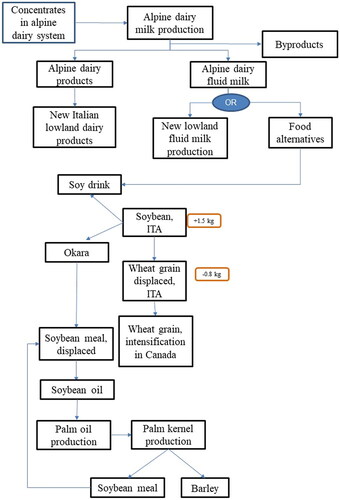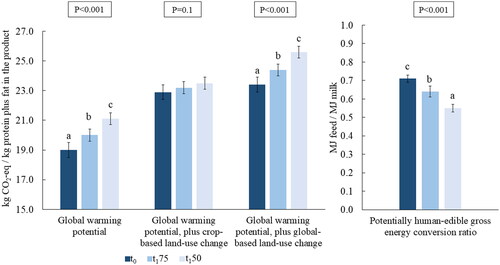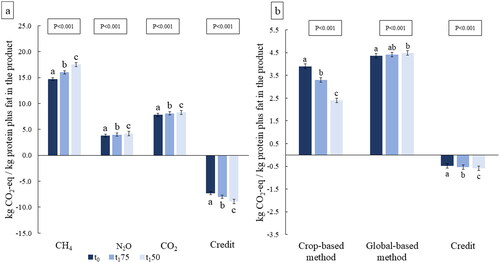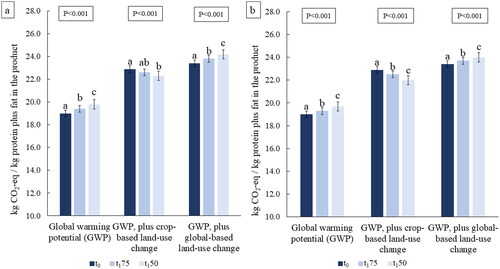Figures & data
Table 1. Descriptive statistics of farm area, herd composition (as livestock units -LU – with cattle >2 years: 1 LU, cattle 6 months to 2 years: 0.6 LU, cattle <6 months: 0.4 LU), and productive traits at the base scenario (t0), before the reduction in the concentrate supply level (N = 40).
Table 2. Descriptive statistics of farms’ breeding composition and management traits (N = 40).
Figure 1. Scheme for the ‘expanded_system’, covering the deficit in dairy products and fluid milk from the Alpine dairy system at t1 (after the reduction in the concentrates supply level in the lactating cows’ rations) with respect to t0 (base scenario).

Table 3. LSmeans and p-values of milk yield and diet composition for lactating cows at t0, t175, and t150 (before and after reducing the proportion of concentrates in lactating cows’ diet, -25% in t175 and -50% in t150), per one lactating cow (N = 40). LSmeans with different superscripts (a,b,c) within row differ significantly (p < 0.05).
Figure 2. LSmeans and p-value of the impact categories and potentially human-edible energy conversion ratio, computed for the dairy farms plus dairy processing system and (N = 40). Three scenarios tested: 100% (t0), 75% (t175) and 50% (t150) of the initial concentrate supply level in the rations fed to the lactating cows.

Figure 3. LSmeans and p-value of the single gases contribution (a) and land-based CO2 (b) contributing to the global warming potential for dairy farms plus dairy processing system (N = 40). Three scenarios tested: 100% (t0), 75% (t175) and 50% (t150) of the initial concentrate supply level in the rations fed to the lactating cows. Credit due to body weight sold and avoided production of mineral fertilisers.

Figure 4. LSmeans and p-value of the impact values, the system expanded to cover the product deficit in the Alpine dairy system (N = 40), covering based on Italian lowland fluid milk (a) or soy drink (b). Results were reported for the three tested scenarios: 100% (t0), 75% (t175) and 50% (t150) of the initial concentrate supply level in the rations fed to the lactating cows.

Supplemental Material
Download MS Word (35 KB)Data availability statement
The data presented in this study are available on request from the corresponding author upon reasonable request.
